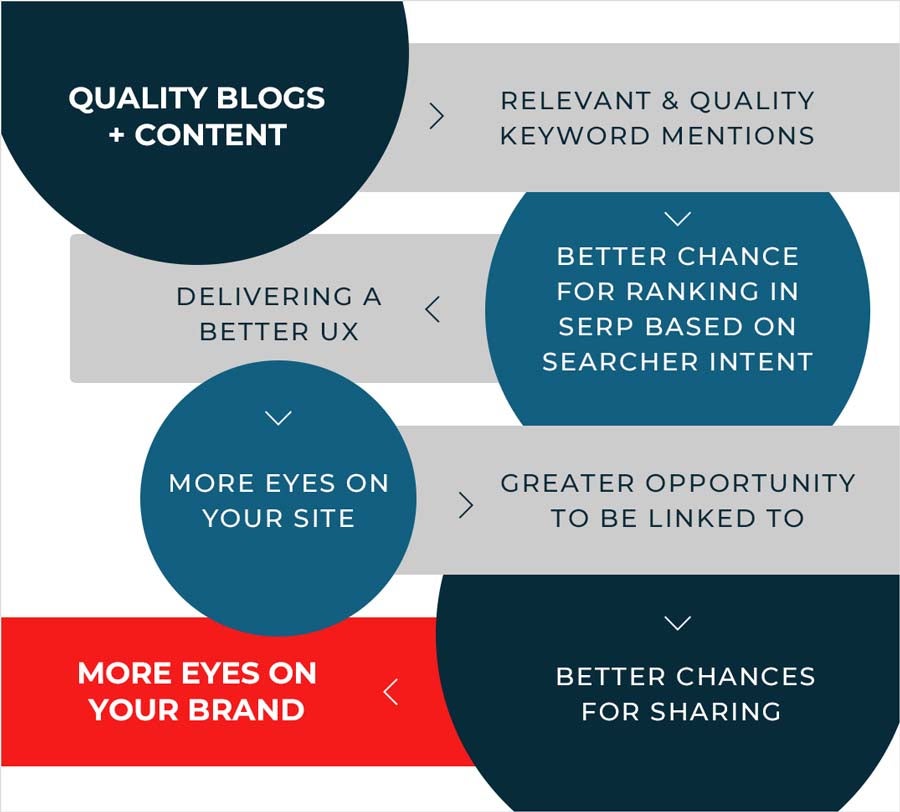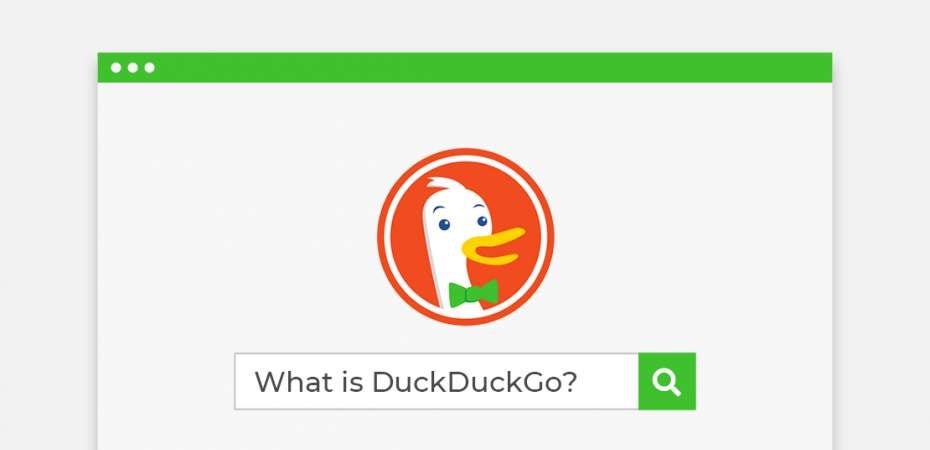September 22, 2020
| Article | Content,
Search Engine Optimization
SEO + Content: The Salt & Pepper of Digital Marketing
When you think of digital marketing, your mind most likely goes straight to paid media or those targeted ads that follow you around on social media. Even though this is accurate, have you ever thought about what might be happening naturally and which marketing efforts might be working together to boost visibility? In this article, I’ll be discussing the organic/natural side of digital marketing, SEO and Content, and how they work as a team. Because just like salt and pepper, peanut butter and jelly, or cookies and milk, you can consume one without the other, but why would you ever want to?
SEO + Content
When selling earned media to a client or when creating an earned media strategy, it’s important to remember that SEO, content, and organic social go hand-in-hand and should not be viewed as different game plans. For an effective and efficient tactic that is going to take you to the top, you need to pull out your best players in the arena. Some of the most common misconceptions when it comes to earned media are:
- Content marketing can replace SEO (or vice versa)
- SEO and content are “one and done” initiatives
- Keyword rankings can only be achieved through SEO
- Content performance can’t be measured
- Earned media is easy
- Social media investment return can’t be measured
So how do you help eliminate the confusion when trying to explain the important connect between search engine optimizations and content production? The truth is, SEO and content overlap in a variety of ways, along with the help from another earned media contributor: social media. When it comes to fulfilling a holistic, earned media strategy, it’s important that all aspects of earned media can benefit each other based on different forms of collaboration.
Here are some of the ways we combine SEO and content initiatives to develop effective strategies at REQ!
Method #1: Quality Verbiage
You may already be familiar with “quality verbiage” by another term:, keywords. Quality content is key when it comes to ranking well in search engine results pages (SERP). Based on what we can learn when it comes to understanding what Google values from its regularg core algorithm updates, the leading search engine focuses heavily on the quality and meaning of the content that websites are publishing. Let’s look at quality content as a domino effect:

When it comes to creating content, it is critical to develop expertise, authoritativeness, and trustworthiness, i.e., E-A-T writing, to gain visibility from Google, but it's important to remember that you should create content for the reader than for the search engine. If your content is giving the reader valuable information to solve a problem or answer a question, Google will notice that searchers are getting what they need out of your content.
Method #2: Backlinks
What better way to gain quality backlinks than through quality content? If your content is resonating with the reader, is being ranked well by Google, and is getting shared more often than not, your words should stand out from the rest. However, Brian Dean from Backlinko recently stated during Virtual MozCon 2020 that it’s not enough anymore to just produce content and hope that it will get noticed in a sea of content.
It’s just as important to promote your content as it is to write quality content. When it comes to content, you should remember the 80/20 rule: successful content is 80% promoting and 20% writing. Write about what you know and push it to different audiences in an effort to get noticed faster.
Another way to boost content with the help of an SEO strategy is to write for the linkerati. Linkerati is a term used to describe site users who are most likely to become the target of a link campaign, and who are more likely to link to your content. These are other content creators, editors, journalists, and forums that understand the goal behind your content and value it enough to share it with their own audiences.
Method #3: User Experience
When it comes to earned media, we focus heavily on the user experience. In fact, being an SEO expert involves understanding the mind of the user and the mind of Google at the same time. Yes, there is a lot of technical jargon that goes into developing a strong SEO foundation, but what is the user getting out of your efforts? How does the user view your website? It all comes down to providing an efficient space to house your content.
When it comes to creating the best user experience through your online presence, the following are key elements to keep in mind:
- Usability: easy and efficient navigation and site structure
- Quality content: keeping your users engaged
- Metadata & formatting: ensuring that every little detail – from the way your site appears in search results to what they see when they land on the site – helps the user
- Site speed: ensure that enhanced content such as images, graphics, and video are not slowing your site down
Understanding what your target audience is looking for out of their search query and then presenting a user-friendly site is a great way to build a loyal following. To do this, you must first understand the searcher intent and then build on this through keyword research, which is then infused throughout the content you develop. When the user likes the way the site looks and functions, they are more inclined to continue to read the content you put out. Users want to feel comfortable on your site.
Method #4: Consistency
Let’s not forget that, when it comes to SEO, the small fixes really do matter. SEO doesn’t always have to be a large and complex fix. Keeping this in mind also means keeping consistency in mind for both SEO and content initiatives. When it comes to SEO, there are a few things you should consistently be monitoring: redirects, sitemaps & indexing, canonical tags, internal & external linking, and local search presence. Once you know what to monitor from a technical perspective, it’s important to look at the right metrics for insights and opportunities moving forward; overall traffic, average session duration, bounce rate, and keyword performance. Having all your ducks in a row and ensuring that your site is SEO friendly only does so much good on its own.
Once all your boxes are checked and Google can technically find your website, it’s important to deliver once Google and the user actually make it to the words on your site. Are you producing new and informational content on a regular basis? Is your content pushing users toward the sale of your products or services? Is your content, through blogging and on the core landing pages, delivering to the searcher’s intent and is it keeping up with the ever changing landscape of SERP?
Continuing to ask yourself questions as you optimize your content and your site is key. When it comes to SEO especially, things are always changing and it’s important to develop an SEO checklist for an ongoing consistency. Whether you’re looking for better strategies on a weekly basis or a quarterly basis, it’s important to be in the know. And just like your SEO checklist, there is a checklist when it comes to creating valuable content on an ongoing basis:
- Can your audience find your content?
Solution: Remember to use SEO best practices such as keyword research, metadata optimizations, unique imagery, and proper linking.
- Can your audience actually read your content?
Solution: Formatting and organization are important for readers. They have to like the layout, the images, and the overall purpose of the writing.
- Does your audience understand how your content connects them to your brand?
Solution: Know what type of content your audience enjoys engaging with and then provide expertise around it. Show the reader that you know what you’re talking about.
- Does your audience want to take action and/or share after reading?
Solution: Incorporate personalization and ways for your readers to do something with your content following their reading. Include CTAs, social share buttons, and internal and external linking.
Method #5: Traffic
So what really are the benefits of investing in blogging for your overall SEO strategy and for your company? The truth is, organic traffic is a long-term strategy, but an effective one. Continuing to produce quality content with a focus on SEO best practices is a way to increase brand awareness, build site authority, develop a steady stream of traffic, and build a loyal customer base. To continue to increase overall traffic, you must keep up with current trends and search intent. Give the reader what they want and what they can’t find elsewhere. Answer the questions, provide value, and give them a reason to invest in your product or service.
Benefits of Content
When it comes to boosting your overall digital marketing strategy and strengthening your SEO goals, content boasts many benefits. Investing in content not only fills your website with educational and informative words to strengthen the user experience, but it also helps your brand get noticed more often by Google. When it comes to producing content at REQ, the following are the top benefits that we consider:
- You are able to reach top-of-funnel audience attention, to boost brand awareness and customer loyalty. Content helps when it comes to reaching people who are not as familiar with your brand yet.
- Content provides value to your audience and helps solve problems without expecting anything in return. In general, content builds trust with your audience.
- Producing content gives your brand the opportunity to showcase your industry expertise to users. Quality content builds credibility with the audience by showing them you are a thought leader on the topic at hand.
- Quality content embodies expertise, authoritativeness, and trustworthiness (E-A-T), benefiting the user, the search engine, and the overall performance of the website.
- Valuable content earns backlinks, which in turn can help increase the website’s rankings and organic traffic to your leading revenue-driving landing pages.
It’s important to remember that content marketing is a long term investment. It takes more time to see the benefits of content marketing compared to paid media, but you’ll benefit from it for much longer. The value of content and SEO continues to build long after your paid media ads have been turned off. And like it or not, content and SEO are what keep your brand moving forward. They may require a longer process that doesn’t deliver return on investment right away, but it’s a strategy that continues to strengthen your foundation

